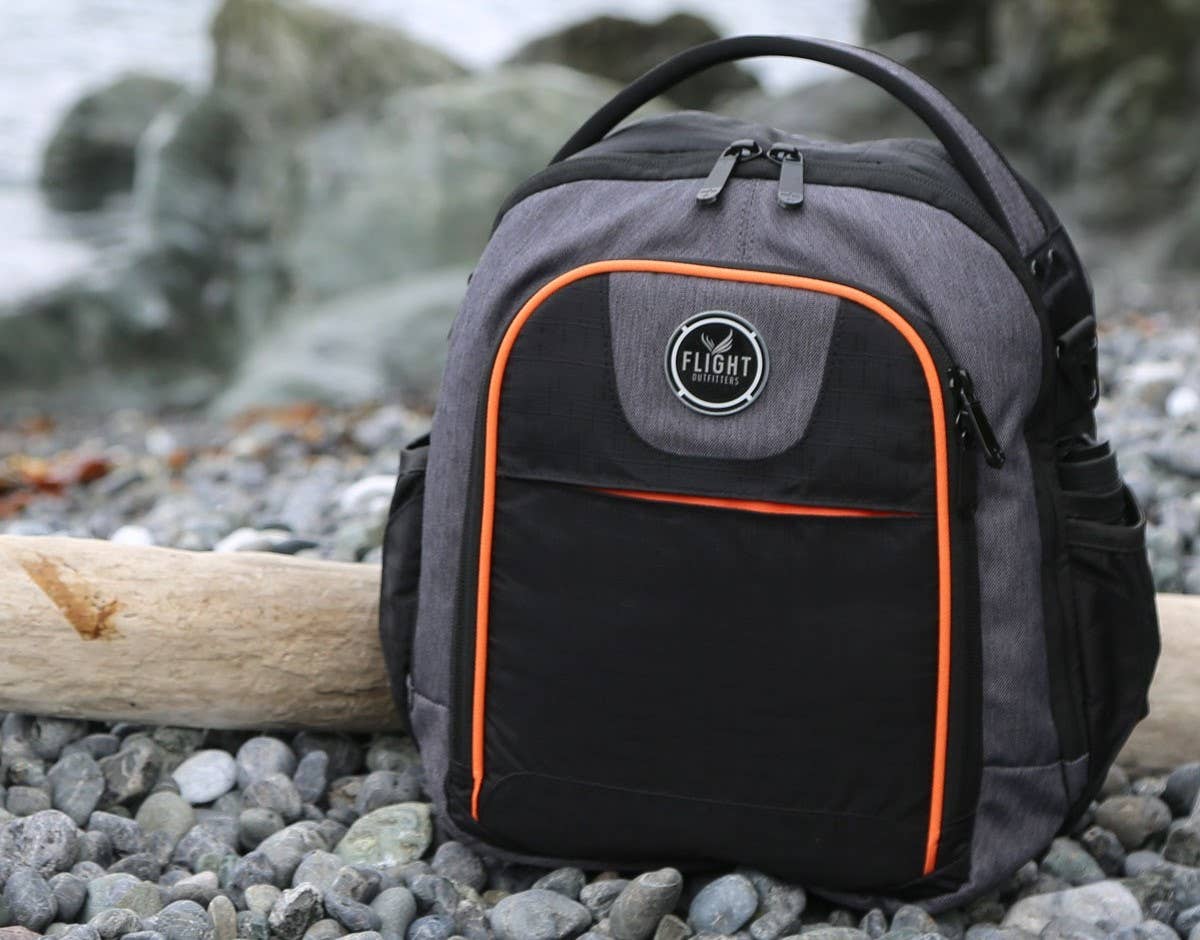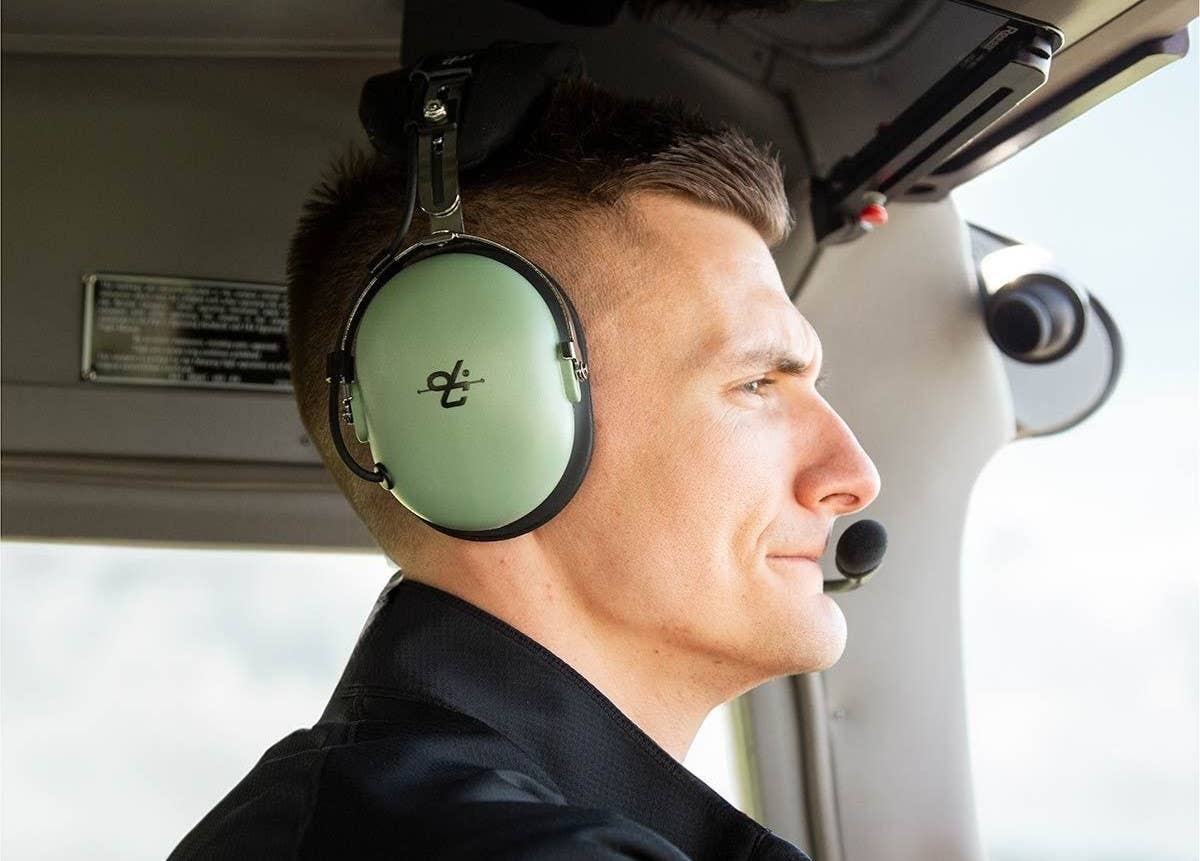Embarking on your flight training journey is a major milestone for many. It was the mark of dreams coming true for me as I started several years back. It nevertheless comes with some fairly steep learning curves as you get acquainted with the new lingo, fast-paced lessons, and pressures of the cockpit.
As you are getting oriented in the aviation world, student pilots need every advantage they can get. While no piece of equipment will make you a great pilot overnight, the right tools can make the process smoother, more efficient, and even safer.
From a reliable headset to the perfect kneeboard, outfitting yourself with dependable gear is more than just about convenience—it’s about enhancing learning, communication, and confidence in the cockpit. I’ve spoken with several student pilots from across the country to gather insights into the gear they swear by—and a few of my own top picks made this FLYING list as well.
The Headset: Your Lifeline in the Cockpit
Let’s start with one of the most essential pieces of gear: your headset. I’ve written more about my own headset recommendations elsewhere, but when you’re up in the air, communicating clearly with your instructor, ATC, or nearby aircraft is nonnegotiable. Poor audio or an uncomfortable headset can turn a great lesson into a frustrating one.
Many students, myself included, start out with David Clark H10-13.4s. They’re built like tanks, offer solid passive noise reduction, and provide a clear audio experience. Although there are other options on the market that are less expensive, this headset is the gold standard for student pilots. They’re not the flashiest, but they’re dependable—and for many students, that’s exactly what you want.
“I tried borrowing different headsets before I bought my own,” says Alina Martinez, a student pilot in Oregon. “Once I put on the David Clarks, it was night and day. The comfort and clarity made long cross-countries so much easier to manage.”
That said, newer models from Bose and Lightspeed offer active noise cancellation and Bluetooth connectivity, which can be a huge bonus but at a significantly higher price. Many students opt to upgrade later after earning their private pilot license (PPL).
EFB: The Digital Cockpit Copilot
Gone are the days of unfolding sectional charts in a cramped cockpit. While every pilot should still be familiar with paper charts and ready to use them for planning or as backups, Electronic flight bags (EFBs) have become a staple of virtually every cockpit. They offer users everything from real-time weather and navigation to checklists and flight plan filing in one digital place.
The iPad Mini is probably the most common device students use to access their EFBs due to its compact size, bright screen, and compatibility with aviation apps. Larger tablets may offer more screen real estate, but they often get in the way during flight maneuvers, especially in smaller aircraft.
“I started with a regular iPad, but it was bulky and overheated easily in the cockpit,” says James Lowell, a student pilot in Texas. “Switching to an iPad Mini with a good kneeboard changed the game.”

That kneeboard? The Sporty’s Flight Gear Bi-Fold Kneeboard. It holds your iPad Mini securely, has room for a notepad and pen, and fits comfortably, even if you’re flying something tight like a Cessna 152.
As for EFB software, ForeFlight is the industry standard and the go-to for many professionals, although it comes with a fairly steep price tag and may have more than the average pilot will ever need. If you’re just getting started and looking for a more budget-friendly option, iFly EFB is a solid alternative that is both quite a bit more affordable and still highly functional.
Flight Bag: Keep It Together
A reliable flight bag helps you keep all your tools, documents, and snacks (yes, snacks are important!) organized and ready to go. While your instructor may show up with a worn-out duffel that’s seen better days, you don’t need to break the bank for something functional and sharp-looking.
Flight Outfitters offers a variety of high-quality, purpose-built flight bags for student and other general aviation pilots. I fly with a previous generation of the Flight Outfitters Lift Bag and have found that it is an extremely popular option for its rugged design, padded headset compartment, and ample storage without feeling bulky.

“I use a Flight Outfitters bag, and it’s held up great,” says Maria Dale, a student pilot in Florida. “I keep my headset, logbook, charts, snacks, and sunglasses in there, and there’s still room to spare. Plus, it just looks cool. It’s a really popular brand with other pilots at my school and came recommended to me.”
Sunglasses: Clear Vision, Zero Glare
You’ll spend a lot of time looking into the sun, whether on takeoff, in pattern work, or practicing maneuvers. A quality pair of sunglasses isn’t just about looking the part. It’s about reducing eye fatigue and improving visibility.
Polarized lenses are a no-go in most cockpits, as they can make it difficult to read screens and digital instruments. Instead, look for aviation-specific or nonpolarized lenses that cut glare without distorting displays.

That said, I strongly recommend buying pilot-specific sunglasses, not just nonpolarized sunglasses. This is because pilot-specific pairs are designed with the fact that you will be wearing a headset in mind.
Although I usually fly with a classic pair of Ray-Bans, I once brought along a different pair I grabbed out of my car. After about half an hour of wearing my headset over my sunglasses, my ears started hurting so much that I opted to take off the sunglasses.
Study Materials: Train Smarter, Not Harder
Starting ground school might not be as glamorous as your first flight lesson, but it’s equally important. In today’s world of digital learning, student pilots have access to a buffet of online resources.
Fly8MA, Pilot Institute, and Sporty’s Learn to Fly Course are among the most popular platforms. Each has a slightly different teaching style and pace, so it may be worth getting a feel for each before committing, for instance, by watching some of their content on their YouTube channels.
“I started with Fly8MA and then added Pilot Institute for check ride prep,” says Ethan Roane, a student pilot in Michigan. “It was super helpful to hear topics explained in slightly different ways—it made things click better.”
One surprising tool that’s gaining popularity among students is portable, mountable video cameras. Mounting one during lessons gives students the ability to replay and review their performance.
“I use a mountable camera to record my flight lessons on almost every flight,” says student pilot Ben Starnes in California. “It’s like having an extra instructor. Having the camera in there, paired up with an adapter for radio audio, gives me a chance to review lessons and catch things I missed, like small errors in checklist flow or radio calls. I really do think making that habit has helped me improve way faster.”
Some instructors are even encouraging their students to use cameras to debrief more effectively. Just be sure to check with your CFI and follow all FAA and airport regulations before recording any flight.
A Few Final Thoughts
Equipping yourself properly for flight training doesn’t mean splurging on every gadget in the catalog. You simply don’t need every cool gadget you see, though the options abound.
Even so, investing in essentials like a good headset and pair of sunglasses, an EFB that meets your needs and budget, and high-quality study materials can make a huge difference as you advance in your training and will make it easier to have fun as you do.
A few bonus items can enhance your experience even more. A portable charger, backup paper chart, and water bottle are always good to keep in your bag. Think about dressing appropriately for the weather as well. Bring along a good jacket on cold winter nights and comfortable summer clothes for hot days.
Your journey as a pilot is and will continue to be filled with challenges, but having the right gear for your mission is one important way to lighten the load. Whether you’re practicing steep turns or nailing your first solo cross-country, having the proper tools in your cockpit will help you stay focused, confident, and ahead of the game.
FLYING may earn revenue from the products available on this page and participate in affiliate programs.
Credit: flyingmag.com











